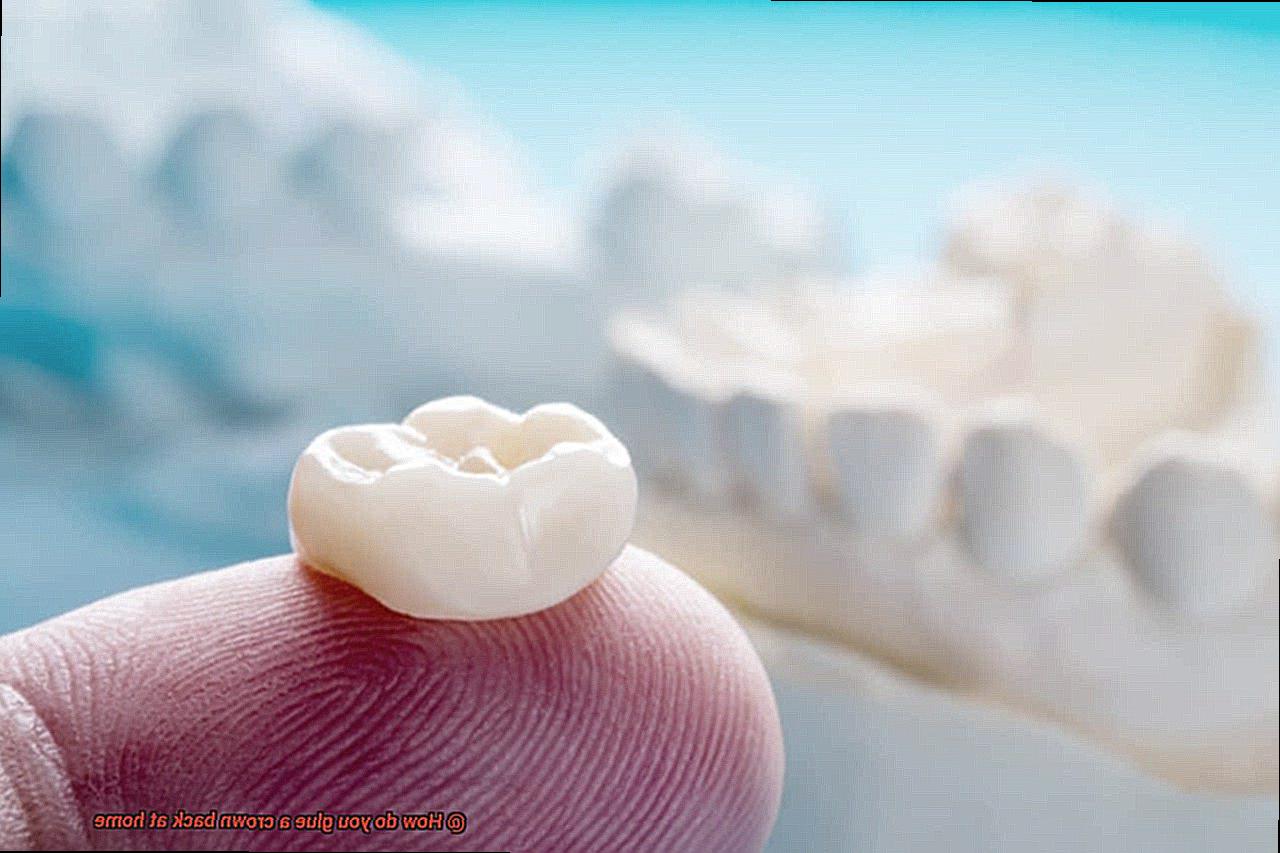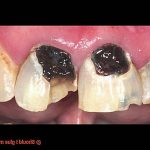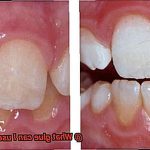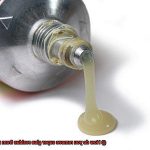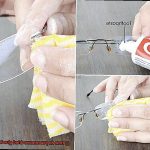Have you ever lost a dental crown unexpectedly? It can happen to anyone, anytime, anywhere – whether you’re munching on your favorite snack or brushing your teeth. While it’s always best to visit a dentist for a loose or lost crown, there are times when you simply can’t make it to the clinic right away.
If this has happened to you, don’t panic. We’ve got your back. In this blog post, we’ll show you how to glue a crown back at home until you can see your dentist.
Before we get started, it’s important to remember that fixing a crown is only a temporary solution. You’ll still need to visit your dentist for a permanent fix, but gluing the crown back at home will help ease any discomfort or prevent further damage until then.
In this guide, we’ll take you through the simple steps of fixing a loose or lost crown using materials that are readily available in your home. We’ll also cover some common problems that may arise during the process and provide expert tips to make things run smoothly.
So grab your materials and get ready to become a pro at fixing crowns from the comfort of your own home.
What is a Crown?
Contents
A crown, also known as a dental cap, is a type of restoration that covers or caps a damaged tooth, restoring its shape, size, strength, and appearance. Crowns are used to protect and strengthen teeth that are weakened by decay, cracks, or fractures, as well as to improve the appearance of discolored, misshapen, or crooked teeth.
Different types of dental crowns are available to meet your individual needs. Metal crowns are the strongest and most durable but may not be the most aesthetic. Porcelain-fused-to-metal crowns are more aesthetically pleasing but can wear down over time. All-ceramic and zirconia crowns are the most natural-looking and aesthetic but may not be as strong as metal or porcelain-fused-to-metal crowns.
The process of getting a dental crown usually involves two appointments with your dentist. During your first appointment, your dentist will remove any decay or damage and shape your tooth to fit the crown. An impression or mold of your prepared tooth will then be taken and sent to a dental laboratory where the crown is created. During the second appointment, your new crown will be cemented onto the prepared tooth using dental adhesive or cement.
While gluing a crown back at home can be a temporary solution until you can visit your dentist for a permanent fix, it’s crucial to note that this should only be attempted if the crown is still intact and undamaged. If the crown is broken or damaged in any way, trying to glue it back at home can worsen the situation. If you do attempt to glue your crown back on at home, make sure to use dental adhesives specifically designed for dental use and follow instructions carefully to ensure optimal results. However, always remember to seek professional help from a dentist as soon as possible.
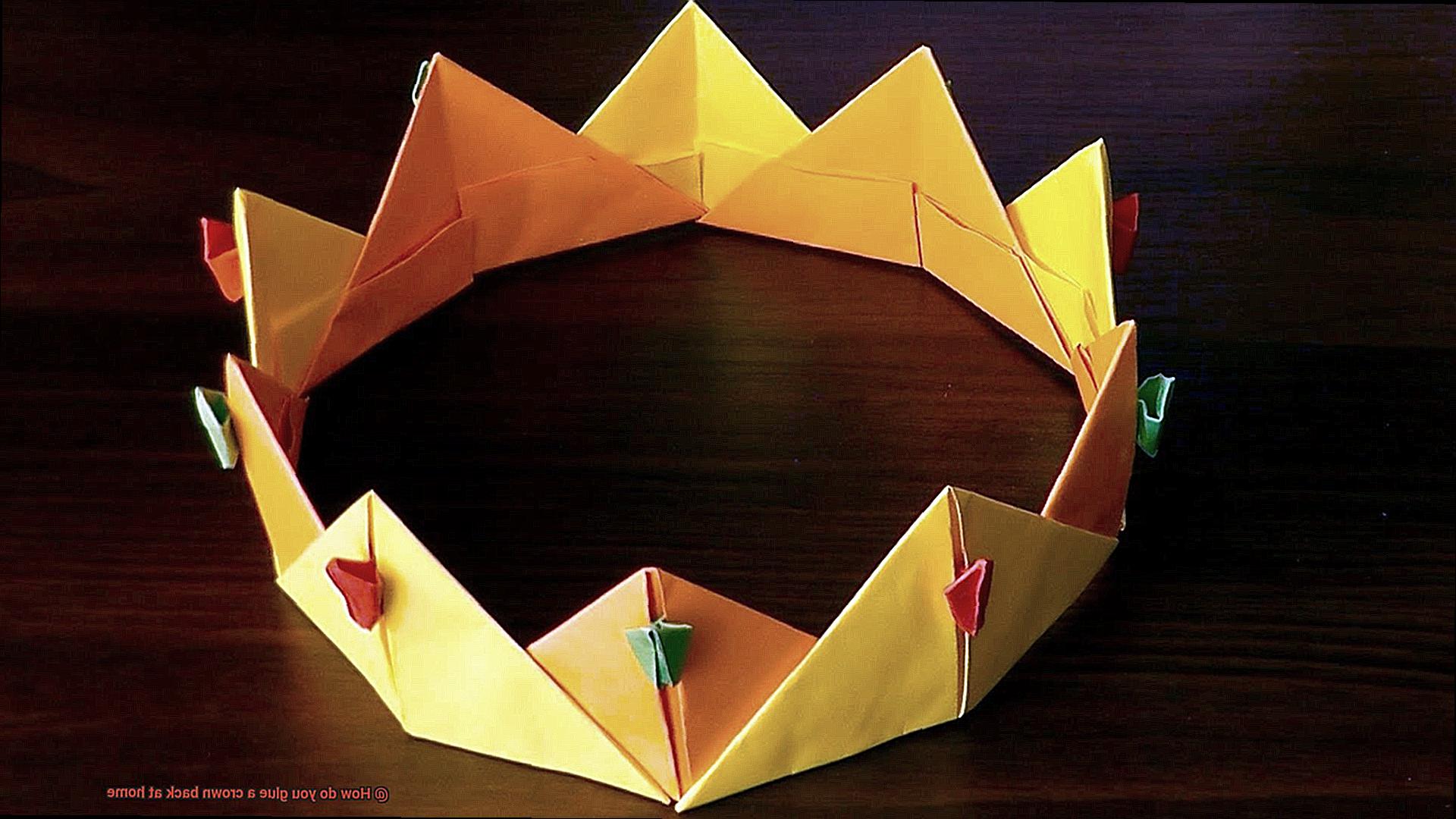
What You Need to Glue a Crown Back at Home
If you have a dental crown that has come loose or fallen out, it can be nerve-wracking to try and fix it yourself at home. However, with the right items and approach, it is possible to reattach your crown safely and effectively.
First and foremost, you will need dental cement or adhesive. This special type of glue is specifically designed for use in the mouth and can be found at most drugstores or online. To ensure the best results, choose a high-quality dental cement or adhesive.
In addition to dental cement, you will also need a clean and dry toothbrush, some dental floss, and a small mirror. The toothbrush will be used to clean the crown and surrounding teeth while the dental floss can help remove any debris or food particles that may be stuck under the crown. Having a mirror on hand will allow you to see what you’re doing and ensure that the crown is properly aligned as you attach it.
Before starting the process, take some over-the-counter pain medication in case you experience any discomfort during or after the procedure. If you experience severe pain or discomfort, it’s important to contact your dentist immediately.
To attach the crown:
- Clean the crown and surrounding teeth thoroughly with a toothbrush and dental floss.
- Apply a small amount of dental cement to the inside of the crown.
- Gently place the crown back onto the tooth, ensuring that it is properly aligned.
- Hold the crown in place for a few minutes until the cement sets.
- Avoid eating or drinking anything for at least an hour to allow the cement to fully set.
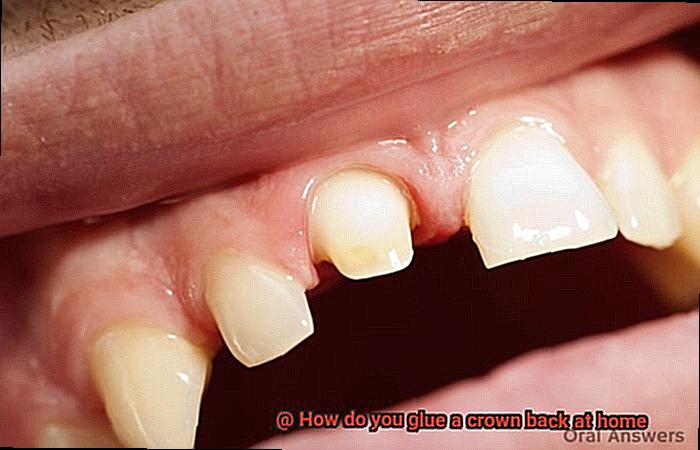
Step-by-Step Guide on How to Glue a Crown Back at Home
Don’t worry, because with a few simple steps, you can safely reattach it at home. Keep in mind that this is only a temporary solution and it’s always best to consult with your dentist if you’re unsure about gluing your crown back at home.
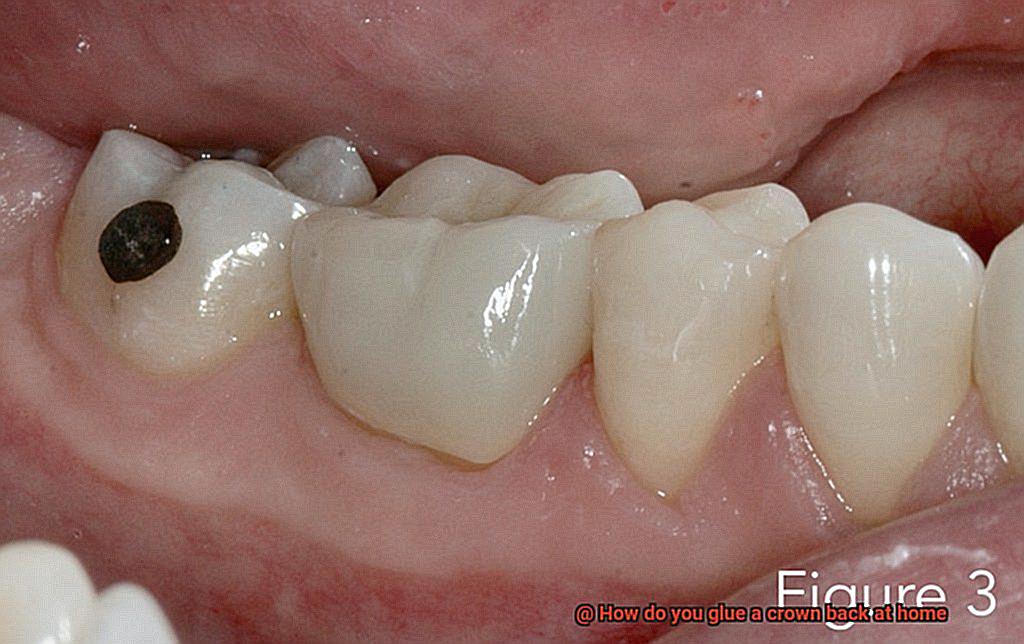
The first step is to clean the area around the tooth thoroughly with a toothbrush and toothpaste or mouthwash. Once the area is dry, purchase dental adhesive or dental cement from your local drugstore or online. These products are designed to temporarily glue your crown back in place.
Next, apply a small amount of dental adhesive or cement to the inside of your crown. Be careful not to use too much, as this can cause the crown to not fit properly. Then, carefully position the crown back onto the tooth and press down firmly. Hold it in place for several minutes until the adhesive sets.
After the adhesive has set, avoid eating or drinking for at least an hour to allow it to fully dry and set. You should also avoid sticky or hard foods that could dislodge the crown again.
Remember that gluing a crown back at home is only a temporary solution. You should see your dentist as soon as possible to ensure that your crown is securely reattached and there are no underlying issues causing it to fall off in the first place.
Aftercare Tips for Gluing a Crown at Home
While it may seem like an easy solution, taking proper care of your repair afterward is crucial to ensure its longevity. Here are some essential aftercare tips to keep in mind:
Avoid hard or sticky foods
After gluing the crown back, it’s important to avoid eating hard or sticky foods for at least 24 hours. This will allow the adhesive enough time to set and cure in place properly. Stick to soft foods for a day to prevent any potential damage.
Brush and floss carefully
It’s important to continue practicing good oral hygiene habits, but be sure to brush and floss carefully around the repaired tooth to avoid putting too much pressure on the crown. This will help prevent any dislodging or further damage.
Use sensitivity toothpaste
If you experience any discomfort or sensitivity after gluing the crown back, try using toothpaste designed for sensitive teeth to help alleviate any discomfort. This can help make your recovery more comfortable.
Contact your dentist immediately
If you experience any pain or discomfort around the crowned tooth, contact your dentist immediately. These symptoms could be an indication of underlying issues that need attention.
Schedule regular dental check-ups
Regular dental check-ups are essential to assess the condition of your crown and ensure it is functioning correctly. Your dentist can also identify any potential problems and address them before they escalate into more significant issues.
By following these aftercare tips, you can help ensure that your crown repair lasts as long as possible and avoid any further damage or complications. Remember, while gluing a crown back at home can be a temporary solution, it’s important to seek professional help from a dentist as soon as possible for a proper and long-lasting repair.
When to Seek Professional Help from a Dentist
When it comes to dental issues, seeking professional help from a dentist is the best course of action. Even though some issues can be addressed at home, gluing a crown back on is not one of them. As an expert in dental health, I cannot stress enough how important it is to avoid attempting to reattach a crown without proper tools and techniques.
Crowns are designed to fit your teeth perfectly, and any attempt to reattach them at home can cause more harm than good. It is essential to remember that dental crowns are delicate and require the right tools and techniques to reattach. If you try to glue it back on your own, you may end up causing further damage to your tooth or crown or even develop an infection.
If you’re experiencing pain or discomfort associated with a lost crown, it could be a sign of an underlying issue that needs professional attention. A dentist will evaluate the situation and provide the appropriate treatment plan, which may involve reattaching the crown or recommending an alternative solution.
In general, seeking professional help from a dentist is always the best decision when dealing with any dental issue, especially when it comes to something as delicate as gluing a crown back on. By doing so, you can ensure that your oral health is protected, and any underlying issues are appropriately addressed.
Potential Risks of Gluing a Crown at Home
Losing a dental crown can be a distressing situation, but attempting to glue it back on at home can be risky. As a dental care expert, I strongly advise against trying to glue a crown back on at home without proper knowledge and guidance from a dental professional.
The primary risk of gluing a crown back on at home is causing damage to the tooth or the crown itself. If the crown isn’t adequately cleaned and prepared, it might not bond correctly, leading to the need for additional dental work. Furthermore, using the wrong type of adhesive, such as superglue or household adhesives, can be toxic and cause damage to the tooth and surrounding tissue.
In addition, attempting to glue a crown back at home may cause discomfort or pain. If the crown isn’t properly aligned or seated, it can irritate the gums and surrounding tissue. Furthermore, if there’s an underlying issue with the tooth, such as decay or infection, trying to glue the crown back in place may worsen the problem and cause further pain or discomfort.
It’s essential to understand that gluing a crown back at home may seem like a quick fix; however, it should only be done in emergency situations and under the guidance of a dental professional. Seeking professional dental care is always the best course of action when dealing with any dental issue, including lost crowns. Doing so can ensure that your oral health is protected, and any underlying issues are appropriately addressed.
OdhAX7Sd0SY” >
Conclusion
In summary, losing a dental crown can be anxiety-inducing, but gluing it back on at home can offer temporary relief until you can visit your dentist. However, it’s crucial to remember that fixing a crown at home is only a short-term solution and should not be attempted if the crown is damaged or broken in any way. Seeking professional help from a dentist as soon as possible is essential.
If you opt to glue your crown back on at home, ensure that you use dental adhesives specifically designed for dental use and follow the instructions carefully. Additionally, taking proper care of your repair afterward is critical to ensure its longevity. Avoiding hard or sticky foods for 24 hours, brushing and flossing carefully around the repaired tooth, using sensitivity toothpaste if needed, and contacting your dentist immediately if you experience any pain or discomfort are all vital steps.
Attempting to glue a crown back on at home without proper knowledge and guidance from a dental professional can cause damage to the tooth or the crown itself. It may also cause discomfort or pain and worsen underlying issues with the tooth.
In general, seeking professional help from a dentist is always the best decision when dealing with any dental problem, particularly when it comes to something as delicate as gluing a crown back on.

